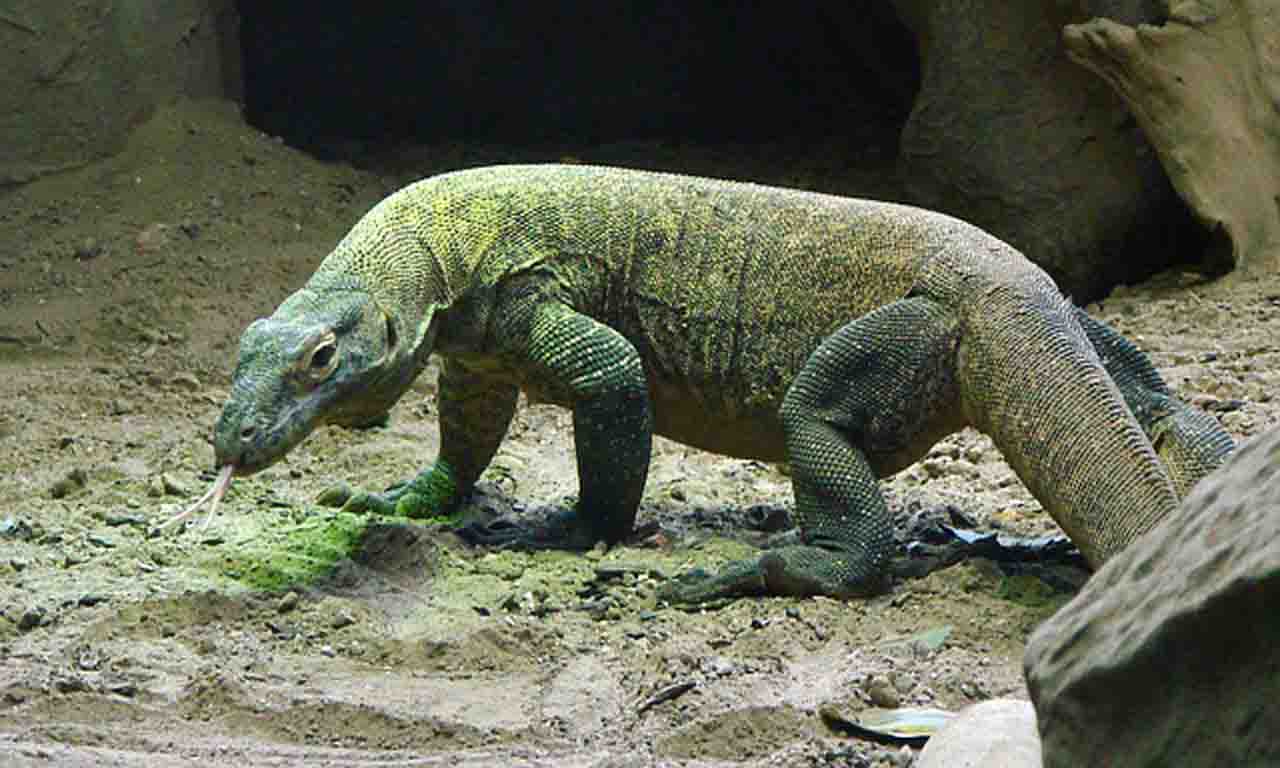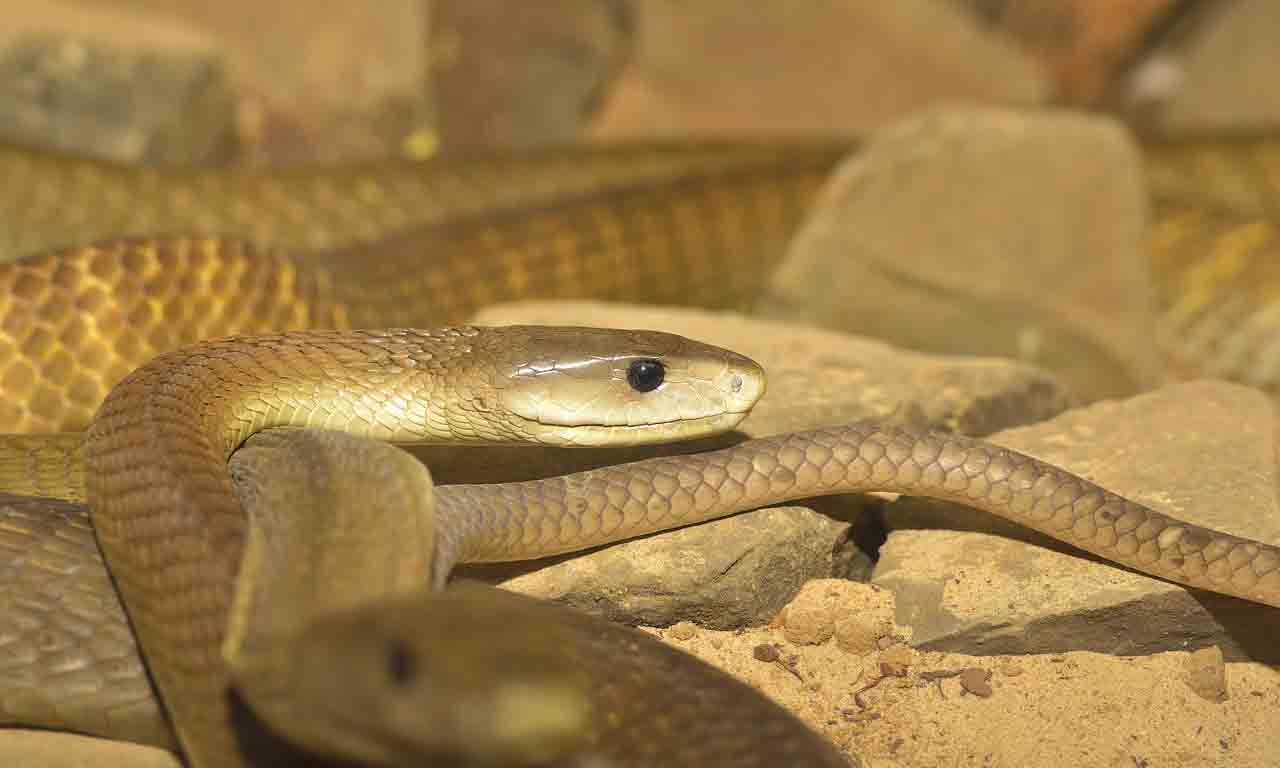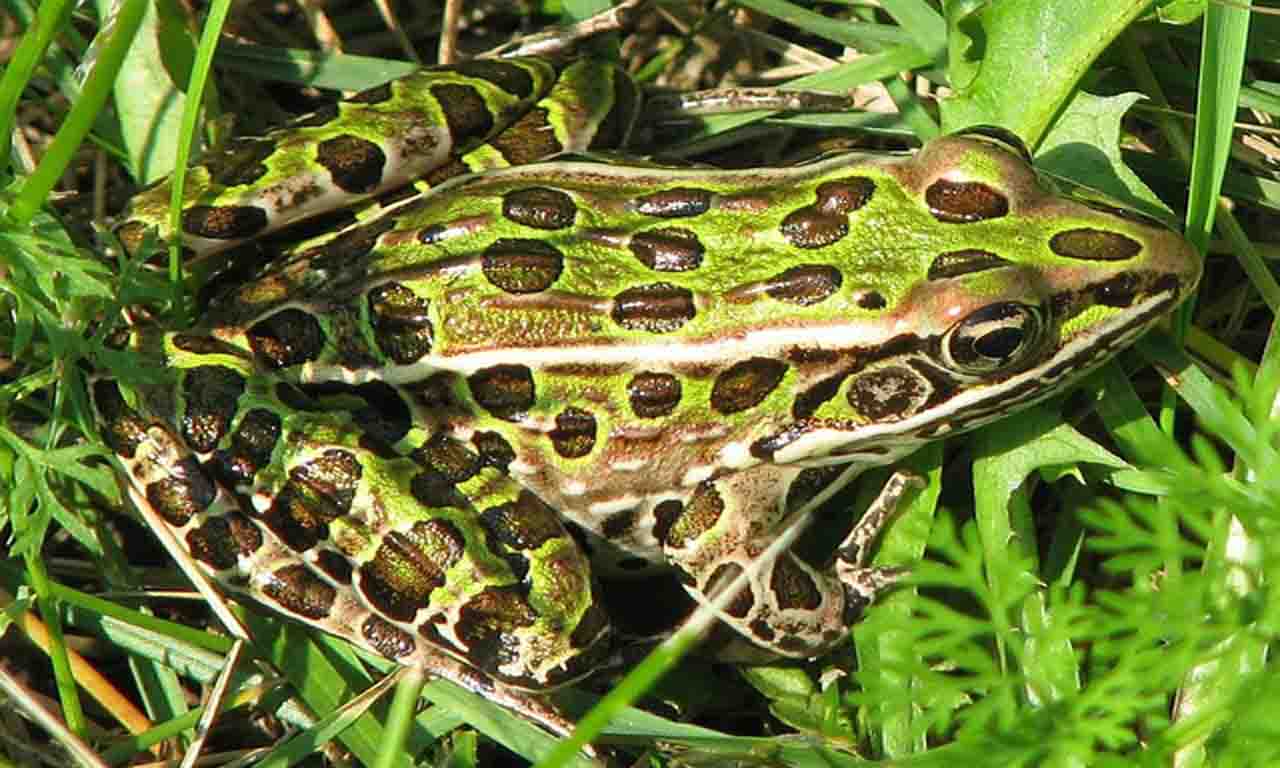 A few animals fall in cold blood, and these animals have to generate heat from external sources. Their body cannot generate heat by themselves. So here is a list of cold-blooded animals. Reptiles, amphibians, fishes all of them falls in the cold-blooded category. Whereas mammals like dog, cat all fall in the warm-blooded category.
A few animals fall in cold blood, and these animals have to generate heat from external sources. Their body cannot generate heat by themselves. So here is a list of cold-blooded animals. Reptiles, amphibians, fishes all of them falls in the cold-blooded category. Whereas mammals like dog, cat all fall in the warm-blooded category.
Here is a list of cold-blooded animals
- Crocodile: All species and subspecies of the crocodile.
- Frog & Toad: Common Toad, Common Frog, Northern Leopard Frog
- Lizards: Komodo dragon, monitor lizard
- Snakes: Black Mamba, Grass Snake
- Naked Mole Rat
- Sea Turtle: Leatherback sea turtle, Loggerhead Sea Turtle
- Fishes: Atlantic Bluefin Tuna
- Spiders
Crocodile
Crocodile is cold-blooded. They are big and aggressive, and they prey on big animals like zebra, wilder beast etc. Regardless of that, they cannot generate heat by themselves. They have to come to the surface and absorb the heat from the Sun. Not doing so will reduce their body temperature drastically, and they won’t be able to function.
Crocodile maybe the king of swamps but when they come on land, they become somewhat vulnerable, but still they have to come to the surface. All species of crocodile, alligator, caiman are cold-blooded. They come up to the surface to keep their body heat in balance.
Caiman is a smaller crocodile species, and when they come out on the land, animals like Jaguar can take advantage of that and kill them. Caiman are forced to take the risk because of they are cold-blooded.
Lizards
Lizards are also cold-blooded, which means they also need external heat to keep their body warm. Since most lizards live on land, they get adequate sunlight to keep their body warm.
The lizard usually comes out at morning and absorbs the Sun’s heat, but they stay away from the afternoon sun’s heat. During that time, they raise their body temperature adequately. Lizards have to spend a lot of time in sunbathing to absorb the heat from the Sun.
Komodo Dragon
 Komodo dragon, the largest of lizard, is cold-blooded. They have to spend a lot of time in the heat of the Sun to warm their body, which is why you’ll always see them in daylight.
Komodo dragon, the largest of lizard, is cold-blooded. They have to spend a lot of time in the heat of the Sun to warm their body, which is why you’ll always see them in daylight.
Monitor Lizards
Monitor lizards are another big lizards. Although they are not as big as the Komodo dragon, they are still big compared to other lizard species. They are also cold-blooded and need external heat of the Sun to maintain their body temperature.
Gecko
The house gecko that you see in your house is also cold-blooded. Still, they have some control over the regulation of body temperature. They can regulate their body temperature when it’s around 26-35 degrees however if the temperature decreases they will shift to places which is much warmer or can also take the help of Sun to regulate their body temperature.
Snakes
Snakes are also cold-blooded, and they also need external heat to maintain a balanced body temperature. Snakes come out in the morning and the evening and absorb the Sun’s heat while avoiding the noon.
Here Is The List Of Some Of These Snakes
Common European Viper
As the name suggests, the common European viper can be found in Western Europe and East Asia. These snakes are venomous, but they are rarely fatal to humans. This viper is very widespread, so chances are you’ll probably see one in you live in those areas. They avoid humans, and they don’t usually bite unless provoked or stepped on.
Black Mamba
 The black mamba is the fastest snake on the earth, and they are extremely venomous. They can be found in sub-Saharan Africa. They usually avoid humans, but if provoked, they can attack. They can grow up to 14 feet and numerous attacks has been recorded. They are among the longest snake in Africa.
The black mamba is the fastest snake on the earth, and they are extremely venomous. They can be found in sub-Saharan Africa. They usually avoid humans, but if provoked, they can attack. They can grow up to 14 feet and numerous attacks has been recorded. They are among the longest snake in Africa.
King Cobra
King cobra is the king of all venomous snakes. They can grow up to 20 feet long and devours other snakes. They are very venomous and aggressive. They can be found in India through Southeast Asia. Big, powerful, aggressive makes them the king of venomous snakes. They even attack python and sometimes devours them.
Indian Cobra
Indian cobra as the name suggests can primarily found in India, Nepal, Bhutan, Bangladesh, Pakistan, Sri Lanka. They are extremely venomous, aggressive and long (although not as long as King cobra). These are also known as Asian cobra.
Grass Snake
 The grass snake is non-venomous. They can grow up to 2 meters (6.5 ft). Even these small non-venomous snake is cold-blooded, so they have to absorb heat from sunlight, and during that time, they are often attacked by bigger snakes. Many keep them as pets since they are non-venomous and is non-lethal to human. They can be found across England and Wales.
The grass snake is non-venomous. They can grow up to 2 meters (6.5 ft). Even these small non-venomous snake is cold-blooded, so they have to absorb heat from sunlight, and during that time, they are often attacked by bigger snakes. Many keep them as pets since they are non-venomous and is non-lethal to human. They can be found across England and Wales.
Ball Python
The Ball Python is one of the most popular constrictor snakes that are often kept as pets. These snakes are the smallest among the pythons, and they are native to Central and Native Africa. They can grow up to a length of 6 ft. The curl up like a ball when they are stressed of provoked.
Burmese Python
The Burmese python is one of the biggest among the constrictor snake. They are usually around 5 meters (16 ft), but some can grow up to 7 meters (23 feet). A specimen of 5 meters can weigh approximately 165 lb, and they have big powerful muscles. With that size, they can attack big animals. Even these powerful python are cold-blooded, so they have to sunbath to increase body temperature.
Reticulated Python
Another of the big pythons. The name reticulated was given because of the net-like pattern in their body. They are big and powerful. They are native to South Asia and Southeast Asia. Their length greatly varies with an average of 6.5 meters (21 ft) to 7.5 meters (24.6 ft) and because of that size they can hunt a wide range of prey including deer.
Green Anaconda
Green Anaconda the heaviest of all snakes. They can be found in South America. They are non-venomous constrictors, and they eat animals like deer, wild boar, or whatever comes close to them. The seer size, weight and constricting power can crush the life of almost all animals.
Green Anaconda hides underwater and waits for its prey to come close to them, and once they are close enough, the Anaconda strikes. Anaconda is also seen to eat a crocodile. But even these big and powerful snake needs external sources to balance their body temperature.
Green Tree Python
The green tree python as the name suggests lives on trees and they are green in color which allows them to camouflage very well. They can grow up to 2 meters (6.6 ft) in length and are native to New Guinea.
Aesculapian Snake
Aesculapian snake is a non-venomous snake. They can grow up to 2 meters (6.6 ft), and they are native to Europe. They brownish-green, black or olive-yellowish in color.
Although they are not as big as other snakes mentioned in the list, they are definitely among the longest snake in Europe. They usually like to stay in warm regions. It can be either rocky, foresty regions because it helps them maintain their body temperature during cold weather.
Cottonmouth
Cottonmouth is one of the most popular venomous snakes that are native to the Southeastern United States. They are also known as the water moccasin. They can grow up to 2.6 ft, but some can grow up to 6 ft. They are semi-aquatic snake, so they eat fish, a small alligator, frogs, toads and small snakes.
Cottonmouth is a relative of a viper, but they are seen to eat small species of viper. They have also displayed cannibalism. They live in swamps, streams, lakes and more or less every place where there is stored water.
Frogs & Toad
Frogs and toads are also cold-blooded animals or amphibian. Their body temperature changes with the environment, so they have to use external heat sources to regulate their body temperature. In most cases, it is the Sun, but it can be another source that can produce heat. Since they are small, they can maintain their body temperature with a small heat source.
Common Frog
Common frog or European common frog can be seen in Europe, Scandinavia, South Italy, Asia, Ireland. They also need external heat to maintain body temperature. There are two ways by which they can maintain body temperature. One is warm water. Frogs can migrate to warmer water regions to increase their body temperature, or they can come out and sunbath. During the winter they go to hibernation.
European Tree Frog
European tree frog can primarily found in Europe, France, Poland and Greece. These frogs are small, and they can be of green, grey or tan.
Marsh Frog
A marsh frog is native to Europe and in parts of Asia. They are a species of water frog. They have a wide range of color combination ranging from brown, green, dark grey with lines of different colors on their body.
This is the distinctive feature of these frogs. These frogs typically spent most of their time in the water, and they migrate from cold to warm water to maintain body temperature and comes up to surface when there is adequate sunlight.
Pool Frog
These frogs were found in ponds, but climate change and ponds reduction have made them almost extinction. These frogs are small, and they are native British species.
Common Toad
The common toad is those toads that you usually see in the monsoon season. They are also cold-blooded, and they need to generate heat from external sources. In the warmer period, the toads maintain their body temperature properly, but they will dig and go inside loose soil during winter. It insulates them, and they are able to maintain their body temperature.
Natterjack Toad
Natterjack toad lives in sandy and heathland areas of Europe. One distinctive feature of these toads is short legs and a yellow line running down the middle of their back. The male Natterjack Toad has a single vocal sac under the chin by which they can produce a loud mating call.
Northern Leopard Frog
 The Northern Leopard Frog has a leopard-like pattern all around the body, which looks very beautiful. They are native to the United States and Canada. The leopard-like pattern in their body allows them to camouflage very well in the environment. It’s used to ambush it’s prey and also used to hide from predators.
The Northern Leopard Frog has a leopard-like pattern all around the body, which looks very beautiful. They are native to the United States and Canada. The leopard-like pattern in their body allows them to camouflage very well in the environment. It’s used to ambush it’s prey and also used to hide from predators.
Bullfrog
Bullfrog is a big frog which are seen to eat dragonflies and even other small frogs. They are native to North America and can be found around ponds, lakes and swamps. They can grow up to 6 inches and can weigh up to 1.1 lb. Quite big if you look from a frog perspective. This big frog is also cold-blooded.
Sea Turtle
Sea Turtles are also cold-blooded. If you have noticed that sometimes sea turtles come up on the surface to sunbathe. They do because they are cold-blooded, but this is also when a land predator attacks them.
Fortunately, though they have other ways to regulate their body temperature, they can go to warm water regions to increase their body temperature and go to cold water regions to cool down.
Leatherback Sea Turtle
A Leatherback sea turtle is the largest turtle. They can grow up to a length of 1.75 meters (5.7 ft) and can weigh up to 1540 lbs. They can be found around the lands of the Atlantic Ocean. They are seen to eat jellyfish. They are also cold-blooded.
Green Sea Turtle
 A green sea turtle is another large species of turtle. They can be found in Atlantic, Pacific and Indian ocean. They are herbivore, and they like to eat sea grasses. An adult green sea turtle can grow up to 1.5 meters (4.9 ft) and weigh around 420 lb, but some specimen can weigh up to 694 lb.
A green sea turtle is another large species of turtle. They can be found in Atlantic, Pacific and Indian ocean. They are herbivore, and they like to eat sea grasses. An adult green sea turtle can grow up to 1.5 meters (4.9 ft) and weigh around 420 lb, but some specimen can weigh up to 694 lb.
Loggerhead Sea Turtle
Loggerhead sea turtle is an oceanic marine turtle that can be found throughout the world. They can grow up to 2.9ft and can weigh up to 298 lb. Some specimen can be much heavier but usually they weight varies around 298 lb.
Fishes
Fishes are also cold-blooded; that’s why they have to maintain their body temperature. They have developed a few ways to keep the appropriate temperature. When they need it, they move from the water’s cold water regions to the water’s warm water regions. Since their body changes temperature based on the water temperature, doing so changes the temperature very quickly, thus maintaining the homeostasis.
Yellowfin Tuna
This is a larger tuna species that can grow up to 7.8 ft and weigh up to 400 lb. They are cold-blooded. Due to their big size, they can eat small fish, squid etc. Humans like to eat Tuna, so they are hunted for their meat.
Atlantic Bluefin Tuna
Atlantic Bluefin tuna is native to the western and eastern Atlantic ocean, and they can grow up to 8.2 ft. On average they weigh up to 550 lb while some specimen can weigh up to 1500 lb and was 12 ft in length.
Naked Mole Rat
 Naked mole-rat are burrowing rodent, and they are cold-blooded. They are native to East Africa. They usually make burrows and live within it. They can survive in low oxygen conditions. When the temperature is too cold, they typically snuggle and increases their body temperature, and when the temperature is too hot, they go to the cold regions in their tunnel.
Naked mole-rat are burrowing rodent, and they are cold-blooded. They are native to East Africa. They usually make burrows and live within it. They can survive in low oxygen conditions. When the temperature is too cold, they typically snuggle and increases their body temperature, and when the temperature is too hot, they go to the cold regions in their tunnel.
Spiders
Spiders are cold-blooded, but they don’t need the sun heat to stay alive. They just become less active as the cold increases and eventually becomes dormant. They don’t die in the cold because their body doesn’t need the external heat to stay alive at winters they become dormant and that all.
If the spiders had needed heat like all other cold-blooded animals, they would have lived near external heat sources, but fortunately, they don’t. Some names are wolf spider, crab spider, ground spider etc.
Shark
Shark are usually cold-blooded, but some species are warm-blooded. Cold-blooded means that their body temperature changes as their surrounding water temperature changes. When the water temperature is cold, their body temperature also drops, and when the temperature of the water temperature is warm, their body temperature rises.
They need to keep a balanced body temperature. To do that they travel from cold water to warm water regions. However, some shark can raise their body temperature like White Shark. They can increase their stomach temperature compared to the surrounding water temperature then some sharks have special blood vessels within their body that traps the heat generated by their muscles.
Welcome to my blog. I have been doing pest control for years since my house, garden and pets were always attacked by various kinds of pests and as a result I had to know proper pest control techniques that works. In this blog I share all the tips and tricks that I know and I hope you’ll find it helpful.

